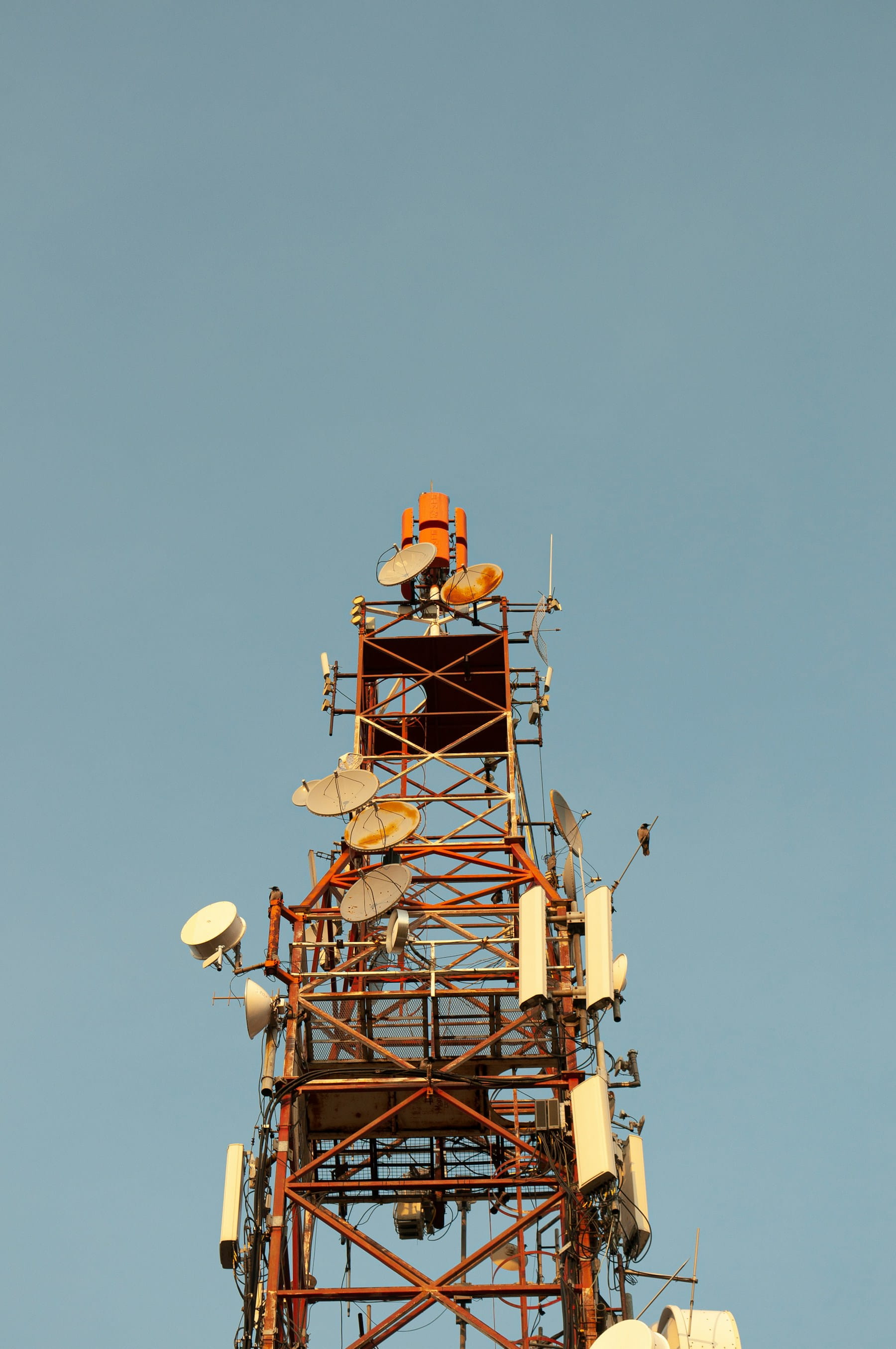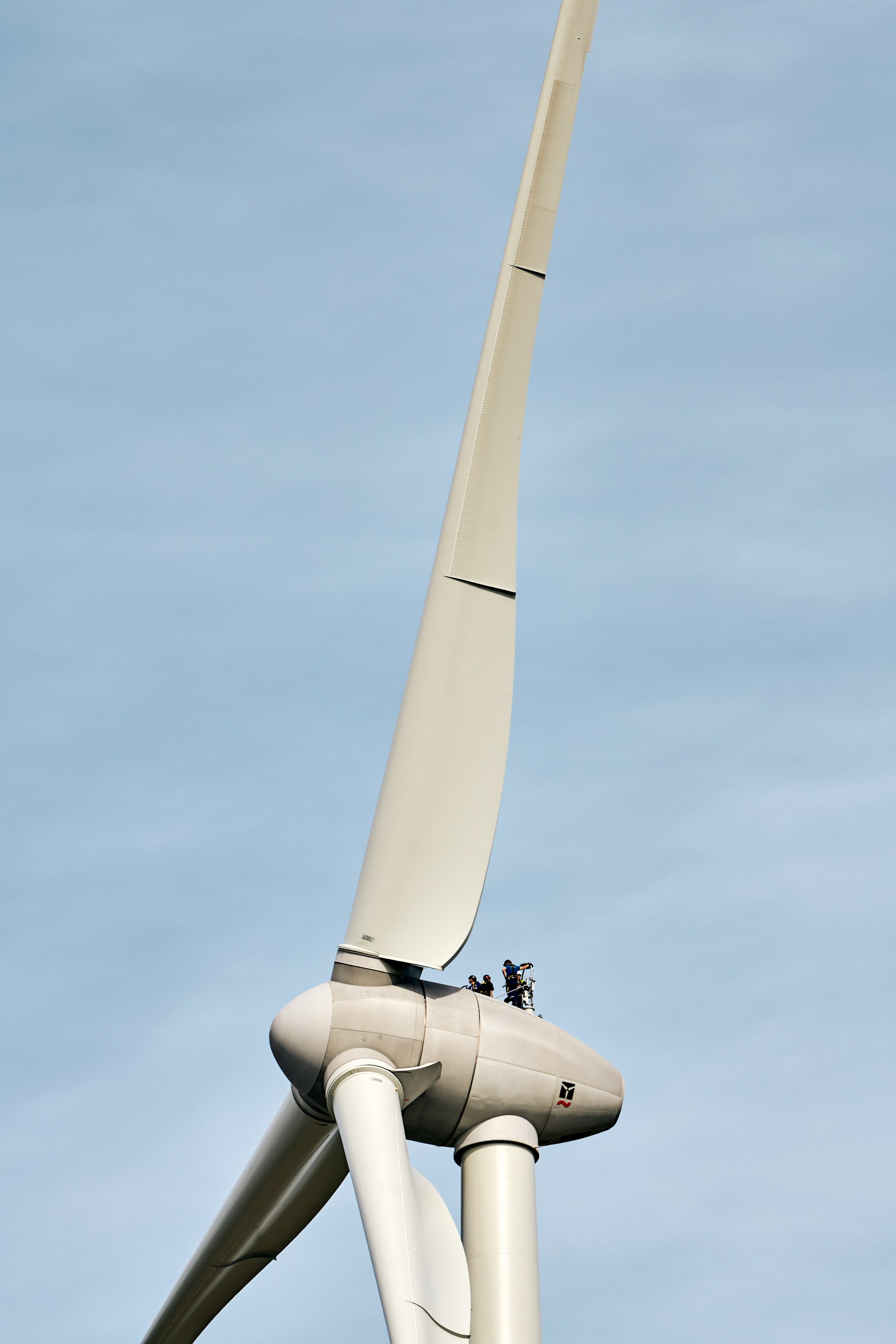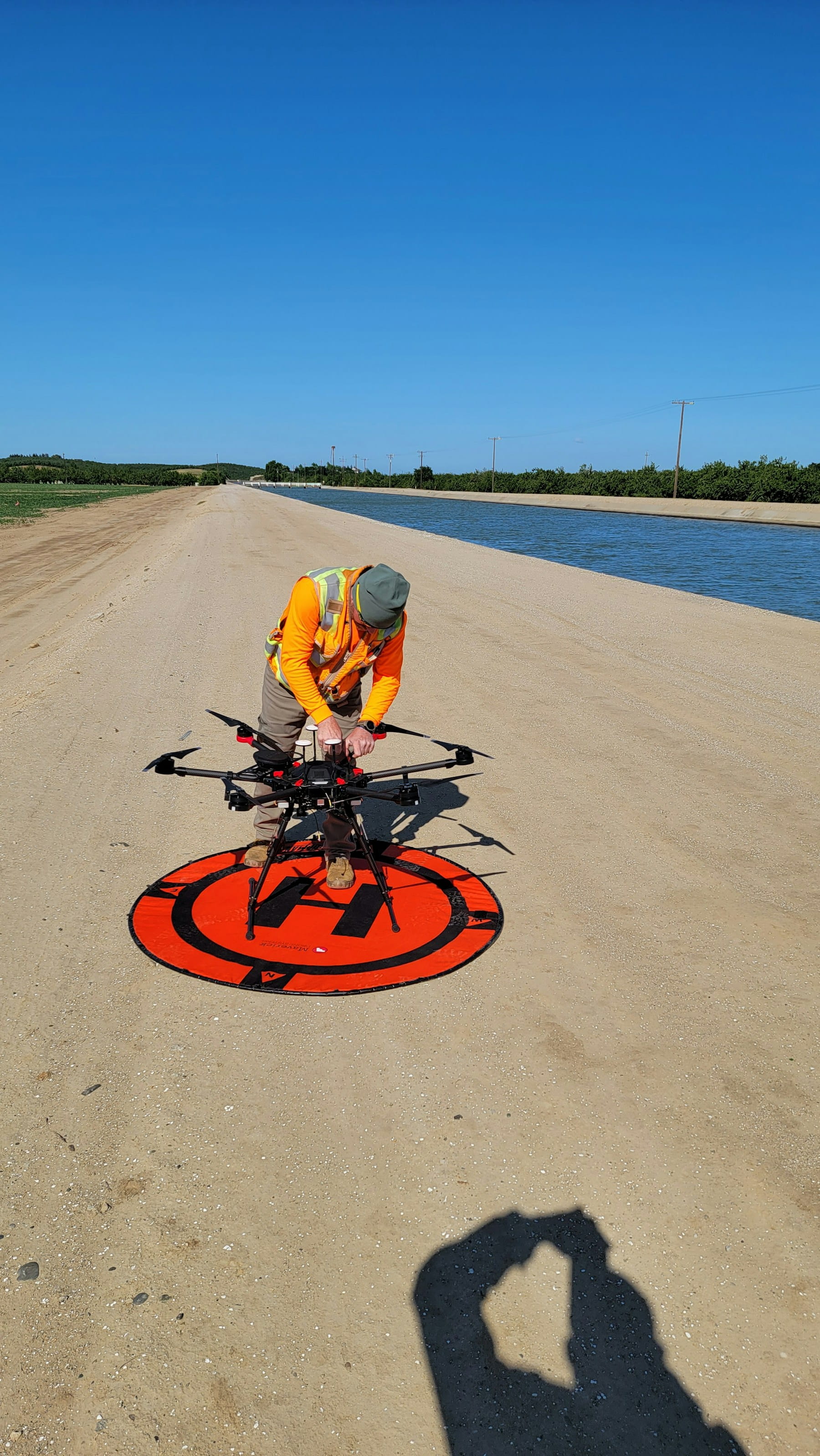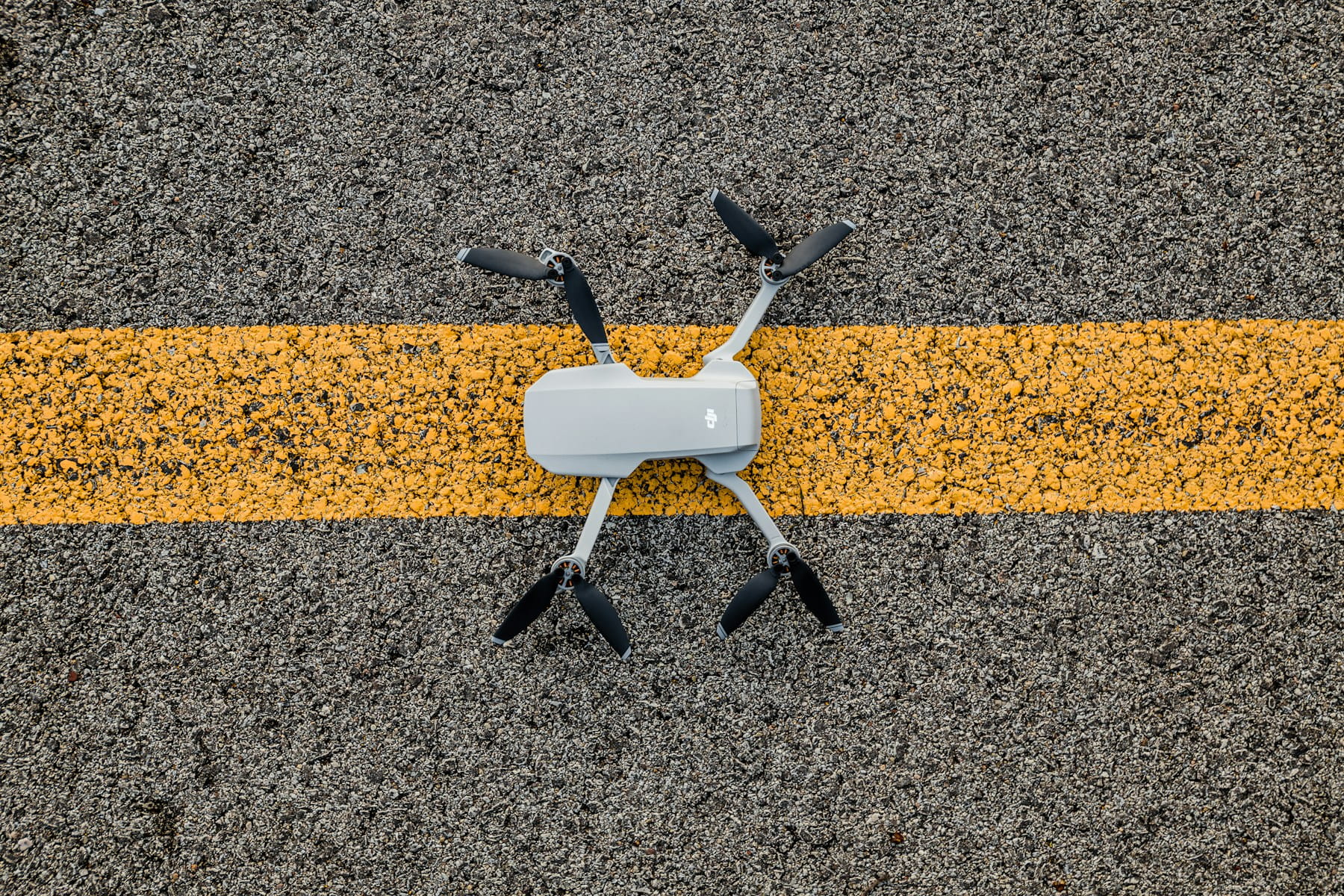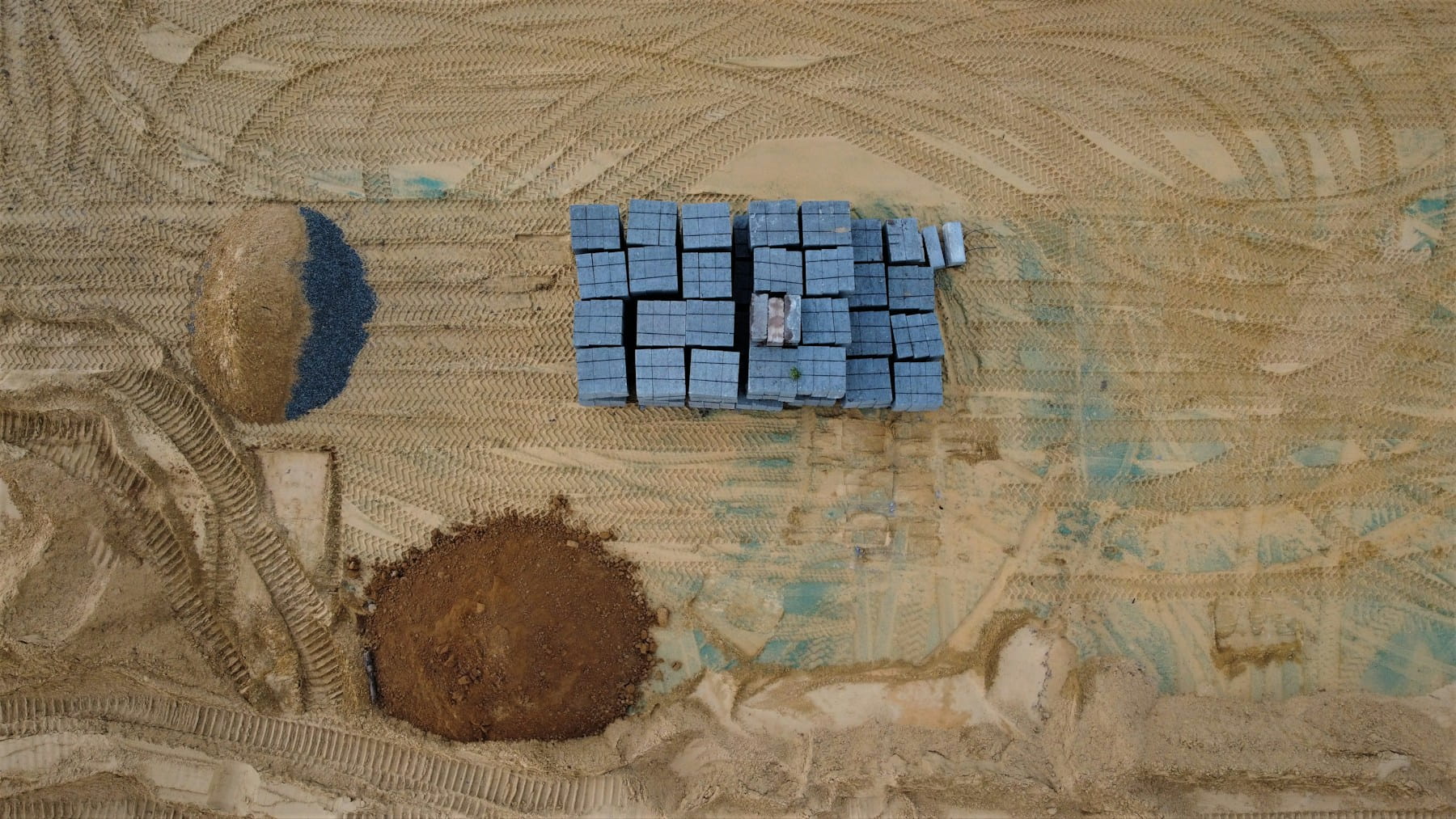Drones for cell tower inspections enhance safety, cut costs, and provide detailed imagery and data, transforming telecom infrastructure maintenance with faster, safer, and more accurate inspection processes.
Picture this: a certified tower climber straps on 60 pounds of safety equipment and begins the treacherous ascent up a 400-foot cell tower. Wind gusts threaten their balance, metal surfaces become slippery with morning dew, and one small mistake could prove fatal. This scene plays out thousands of times annually across the telecommunications industry, where infrastructure inspection has historically meant putting human lives at risk.
The stakes couldn't be higher. When cell towers fail, entire communities lose wireless connectivity, emergency services face communication blackouts, and businesses suffer costly downtime. The Federal Communications Commission mandates regular inspections for good reason – these towering structures face relentless exposure to weather, wind loads, and electromagnetic stress that gradually compromise their integrity.
But here's what's changed everything: commercial drones have revolutionized how we approach tower inspections. What once required dangerous climbing expeditions costing thousands of dollars now happens safely from the ground, delivering superior data quality at a fraction of the cost and time investment.
Table of contents
- Why cell tower inspections matter
- Traditional inspection challenges
- How drones transform tower inspections
- Key benefits of drone inspections
- Best drones for cell tower inspections
- Essential drone features for tower work
- Inspection deliverables and data collection
- Cost analysis: Drones vs traditional methods
- Regulatory compliance and safety
- Planning drone inspection missions
- Future of drone tower inspections
Why cell tower inspections matter
Cell towers face relentless exposure to weather, wind, and environmental stresses. These structures must maintain structural integrity while supporting heavy equipment loads and withstanding extreme conditions. Lightning strikes, ice accumulation, high winds, and corrosion gradually weaken tower components.
Regular inspections identify problems before they cause service outages or structural failures. A loose bolt might seem minor, but it can lead to antenna misalignment, reduced coverage, or equipment damage. Corrosion on tower legs or guy wires can compromise structural integrity, potentially causing catastrophic failure.
Telecom companies conduct inspections for multiple reasons:
- Federal compliance requirements
- Insurance policy mandates
- Preventive maintenance programs
- Post-storm damage assessments
- Pre-acquisition due diligence
- Equipment installation planning
The inspection process examines every tower component, from foundation anchors to antenna systems. Inspectors check structural elements, electrical systems, guy wires, lighting, and grounding systems. They also assess site conditions, vegetation encroachment, and access road integrity.
Traditional inspection challenges
Climbing tower inspections involve significant risks and costs. Technicians must scale heights of 100 to 2000 feet while carrying inspection equipment and safety gear. Weather conditions often delay or cancel inspection missions, creating scheduling backlogs.
The physical demands of tower climbing limit inspection thoroughness. Climbers focus on safety first, which can lead to rushed examinations of critical components. Fatigue affects inspection quality, particularly on tall towers requiring multiple hours to complete.
Traditional inspections also require extensive planning and coordination. Companies must:
- Schedule certified climbing crews
- Arrange safety equipment and vehicles
- Coordinate with tower owners and tenants
- Obtain permits and insurance coverage
- Plan for weather contingencies
Documentation relies on handwritten notes and limited photography from difficult angles. Climbers cannot easily revisit specific areas for additional photos or measurements without climbing again.
The time investment is substantial. A single tower inspection might require a full day or more, including travel time, setup, climbing, inspection, and documentation. Complex towers with multiple tenants and equipment configurations take even longer.
How drones transform tower inspections
Drones operate safely from the ground while capturing detailed imagery of every tower component. Pilots can maneuver around structures from multiple angles, accessing areas difficult or dangerous for human climbers. High-resolution cameras reveal surface defects, corrosion, and structural issues that might be missed during traditional inspections.
Modern inspection drones carry advanced sensors beyond standard cameras. Thermal imaging detects overheating components, loose connections, and electrical problems. LiDAR sensors create precise 3D measurements for structural analysis. Multispectral cameras identify material degradation and coating failures.
Flight planning software automates inspection routes, ensuring consistent coverage and repeatable results. Drones can follow pre-programmed paths around tower structures, capturing images from standardized positions for comparison over time. This systematic approach to mission planning improves inspection consistency and documentation quality.
Real-time data transmission allows inspection teams to review findings immediately. If problems are discovered, drones can return to specific areas for additional documentation without repeating the entire inspection process. This flexibility reduces inspection time and improves data quality.
Key benefits of drone inspections
Safety improvements represent the most significant advantage of drone tower inspections. Keeping personnel on the ground eliminates fall risks, equipment drops, and weather-related accidents. Insurance claims and worker compensation costs decrease substantially when climbing is no longer required.
Time savings are dramatic. Drone inspections that once took days now complete in hours. A skilled pilot can inspect multiple towers in a single day, significantly increasing inspection throughput. Weather delays still occur, but drone operations have wider weather windows than climbing operations.
Cost reductions come from multiple sources:
- Reduced labor costs (one pilot vs. climbing crew)
- Lower equipment costs (no climbing gear, trucks, or safety equipment)
- Decreased insurance premiums
- Faster turnaround times
- Reduced travel and accommodation expenses
Data quality improves through standardized collection procedures and high-resolution imagery. Drones capture consistent documentation from optimal angles, creating detailed records for analysis and comparison. Historical data helps identify trends and predict maintenance needs.
Inspection frequency can increase without proportional cost increases. More frequent inspections catch problems earlier, reducing repair costs and preventing service disruptions. Some companies now conduct quarterly drone inspections instead of annual climbing inspections.
Best drones for cell tower inspections
Selecting the right drone depends on specific inspection requirements, budget constraints, and operational preferences. Several models have proven particularly effective for tower work.
Enterprise-grade platforms
Professional inspection drones offer advanced features designed for industrial applications. These platforms typically include:
DJI Mavic 3 Enterprise provides excellent value for most tower inspection applications. The 4/3 CMOS sensor captures detailed imagery while the 56x hybrid zoom lens enables close-up examination of specific components. Flight time reaches 45 minutes, allowing multiple tower inspections per battery cycle. The thermal variant adds infrared capabilities for electrical system analysis.
Skydio X10 excels in autonomous flight capabilities with advanced obstacle avoidance. The triple camera system combines visual, telephoto, and thermal imaging in a single platform. AI-powered flight assistance simplifies complex maneuvers around tower structures. The 12-kilometer transmission range supports operations from significant distances.
ANAFI AI by Parrot offers 4G connectivity for extended range operations. The 48MP sensor with 14-stop HDR captures exceptional image quality in challenging lighting conditions. Open-source software allows customization for specific inspection workflows.
Specialized inspection platforms
Some drones are purpose-built for inspection applications with unique capabilities:
Voliro T performs contact-based inspections using tiltable rotors and specialized sensors. This platform can conduct non-destructive testing at height, measuring wall thickness, coating thickness, and detecting structural defects through physical contact. While expensive, it provides capabilities unavailable from other platforms.
Inspired Flight IF800 Tomcat offers exceptional flight time up to 54 minutes with payload flexibility. Over 20 compatible sensors enable customization for specific inspection requirements. The compact folding design simplifies transportation between sites.
Selection criteria
Choose inspection drones based on these key factors:
| Factor | Considerations |
|---|---|
| Flight time | Longer flights reduce battery swaps and increase efficiency |
| Camera quality | Higher resolution reveals smaller defects and damage |
| Transmission range | Extended range enables operations from safer distances |
| Weather resistance | IP ratings determine operational weather limits |
| Obstacle avoidance | Advanced sensors prevent collisions with tower structures |
| Payload options | Multiple sensors expand inspection capabilities |
Essential drone features for tower work
Cell tower inspections demand specific drone capabilities that differ from general aerial photography or mapping applications.
Camera and sensor requirements
High-resolution imaging is fundamental to effective tower inspections. Cameras should provide at least 12MP resolution with optical zoom capabilities. Wide dynamic range helps capture details in shadowed areas common around tower structures.
Thermal imaging identifies electrical problems, loose connections, and overheating components. Radiometric thermal cameras provide temperature measurements for quantitative analysis. Some drones integrate thermal and visual cameras for simultaneous data collection.
Gimbal stabilization ensures sharp imagery despite wind conditions common around tall structures. Three-axis gimbals provide superior stability compared to electronic stabilization alone. Controllable gimbal range enables imaging from various angles around tower components.
Flight performance specifications
Wind resistance is critical for tower inspections since tall structures create turbulent air conditions. Drones should operate safely in winds up to 25 mph with higher gust tolerance. Some industrial drones handle winds exceeding 35 mph.
Flight time directly impacts inspection efficiency. Longer flights reduce battery changes and enable multiple tower inspections per flight session. Look for platforms offering 30+ minutes of flight time with inspection payloads.
Transmission range affects operational safety and flexibility. Extended range allows pilots to maintain safe distances from towers while still controlling aircraft precisely. Some systems provide ranges exceeding 10 kilometers in optimal conditions.
Autonomous flight capabilities
Waypoint navigation enables repeatable inspection patterns for consistent data collection. Drones can follow pre-programmed routes around tower structures, capturing images from standardized positions. This automation reduces pilot workload and improves inspection consistency.
Obstacle avoidance systems prevent collisions with tower components, guy wires, and other structures. Advanced sensors detect obstacles from multiple directions, enabling safe autonomous flight around complex tower configurations.
Return-to-home functions provide safety backup when communication is lost or batteries run low. Smart RTH systems calculate optimal return paths while avoiding obstacles encountered during the flight.
Inspection deliverables and data collection
Drone tower inspections produce multiple data types supporting various analysis and reporting needs.
Visual documentation
High-resolution photography forms the foundation of drone tower inspections. Images capture overall tower condition, component details, and specific defects or damage. Standardized photo positions enable comparison over time to track condition changes.
Video footage provides context that still images cannot convey. Smooth gimbal movements reveal spatial relationships between tower components and help viewers understand three-dimensional structure layouts.
360-degree panoramic images document site conditions and surrounding areas. These images help identify vegetation encroachment, access issues, and environmental factors affecting tower operations.
Measurement and modeling
Photogrammetry processing converts drone imagery into accurate 3D models. These digital twins enable precise measurements of tower components, structural analysis, and change detection over time. Model accuracy typically achieves centimeter-level precision with proper ground control.
Point cloud data from LiDAR sensors provides detailed geometric information about tower structures. Dense point clouds enable structural analysis, clearance verification, and deformation monitoring. LiDAR works regardless of lighting conditions, unlike photogrammetry.
Orthomosaic images create georeferenced maps of tower sites showing accurate spatial relationships. These maps help identify property boundaries, access routes, and surrounding infrastructure that might affect tower operations.
Thermal and specialized analysis
Infrared imagery reveals temperature variations across tower components. Hot spots indicate electrical problems, while temperature differences might reveal structural issues or material defects. Radiometric thermal cameras provide quantitative temperature measurements for analysis.
Multispectral imaging can identify material degradation, coating failures, and corrosion that might not be visible in standard photography. Different spectral bands reveal information about material properties and condition.
Non-destructive testing sensors on specialized platforms can measure wall thickness, detect cracks, and assess coating integrity through direct contact with tower components.
Cost analysis: Drones vs traditional methods
The financial benefits of drone tower inspections become clear when comparing total costs of different inspection methods.
Traditional inspection costs
Climbing inspections involve multiple cost components:
Labor costs include certified climbers, ground crew, and supervisory personnel. Typical climbing crews require 2-3 people for safety reasons, with daily rates ranging from $2,000 to $5,000 depending on tower height and complexity.
Equipment costs cover climbing gear, safety equipment, vehicles, and specialized tools. Many companies rent equipment for occasional inspections, adding significant expense to each project.
Insurance and liability costs increase substantially for climbing operations due to inherent risks. Some insurance policies require specific safety protocols or certified crews, further increasing expenses.
Time and travel expenses include crew travel, accommodation, and the extended time required for climbing operations. Complex towers might require multiple days to complete inspection and documentation.
Drone inspection economics
Drone operations typically require fewer personnel and less specialized equipment:
Personnel costs often involve one certified pilot and possibly a visual observer. Daily rates for professional drone pilots range from $500 to $1,500, significantly less than climbing crews.
Equipment costs include drone acquisition or rental, batteries, memory cards, and ground control equipment. While initial drone costs can be substantial, they amortize across many inspections.
Operational efficiency enables multiple tower inspections per day, reducing per-tower costs through improved productivity. Some pilots inspect 3-5 towers daily under optimal conditions.
Cost comparison example
Consider a 200-foot tower inspection comparison:
| Method | Personnel | Equipment | Time | Total Cost |
|---|---|---|---|---|
| Climbing | $3,000 | $1,500 | 8 hours | $4,500 |
| Drone | $800 | $200 | 2 hours | $1,000 |
The drone inspection costs approximately 78% less while providing superior documentation and safety outcomes.
Regulatory compliance and safety
Operating drones for commercial tower inspections requires compliance with aviation regulations and safety protocols.
FAA requirements
Commercial drone operations require Part 107 Remote Pilot certification. Professional pilot training covers airspace, weather, aircraft operations, and regulations. Recurrent training is required every two years to maintain certification.
Operations near airports or in controlled airspace require prior authorization through the FAA's UAS Facility Maps (UASFM) or LAANC system. Understanding airspace restrictions becomes critical since many cell towers are located near airports due to coverage requirements.
Flight altitude restrictions limit drone operations to 400 feet above ground level unless operating within 400 feet of structures. This rule generally permits tower inspections since drones can fly up to 400 feet above the tower itself.
Risk management
Pre-flight planning identifies potential hazards and develops mitigation strategies. Comprehensive risk assessment procedures help identify tower-specific hazards including:
- Guy wires that may be difficult to see
- RF radiation exposure near antennas
- Turbulent air conditions around tall structures
- Metallic interference affecting GPS signals
- Power lines near tower sites
Visual observer requirements may apply depending on flight conditions and range requirements. Observers help pilots maintain situational awareness and watch for aircraft or other hazards.
Emergency procedures should address communication loss, equipment failure, and adverse weather conditions. Pilots should identify suitable emergency landing areas and develop contingency plans before beginning operations.
Insurance considerations
Commercial drone insurance typically covers liability and hull damage. Tower inspection operations may require specific coverage limits due to the value of telecommunications equipment and potential service disruption costs.
Some tower owners require additional insurance coverage or certificates of insurance before permitting drone operations. These requirements should be confirmed during mission planning.
Planning drone inspection missions
Successful tower inspections require careful planning and coordination with multiple stakeholders.
Pre-mission preparation
Site surveys identify potential hazards, airspace restrictions, and operational constraints. Proper pre-flight procedures include thorough site assessment. Google Earth and other mapping tools help pilots understand site layouts, but on-site reconnaissance provides crucial details about guy wires, power lines, and ground obstacles.
Weather planning considers wind conditions, precipitation, and temperature extremes. Tower sites often experience higher winds than surrounding areas due to terrain effects and structure-induced turbulence.
Flight planning software helps develop inspection routes and estimate flight times. Automated waypoint missions ensure consistent coverage while reducing pilot workload during operations.
Coordination requirements
Tower owner notification is typically required before drone operations. Some owners have specific procedures or safety requirements that must be followed.
Tenant coordination may be necessary if multiple companies operate equipment on the tower. RF radiation exposure limits and equipment sensitivity might affect flight planning.
Ground crew safety briefing should cover observation duties, communication procedures, and emergency responses. Even simple drone operations benefit from clear role definitions and safety protocols.
Mission execution best practices
Systematic flight patterns ensure complete coverage of tower components. Starting with overall structure documentation before focusing on specific components helps maintain situational awareness.
Multiple battery planning prevents incomplete inspections due to power limitations. Bringing spare batteries and portable charging equipment extends operational capability.
Real-time data review during missions enables immediate identification of problems requiring additional documentation. Pilots can return to specific areas for closer examination without repeating entire inspection sequences.
Future of drone tower inspections
Technological advancement continues expanding drone capabilities for tower inspections, while regulatory changes enable new operational possibilities.
Emerging technologies
Artificial intelligence enhances automated defect detection and analysis. Machine learning algorithms can identify corrosion, cracks, loose bolts, and other problems from drone imagery, reducing manual analysis time and improving detection consistency.
5G connectivity enables real-time data transmission and remote control capabilities. High-bandwidth connections allow expert analysis of live video feeds and immediate collaboration between field teams and engineering staff.
Swarm technologies could enable simultaneous inspection of multiple towers or comprehensive coverage of large tower sites using coordinated drone teams.
Regulatory evolution
Beyond Visual Line of Sight (BVLOS) operations would enable drone inspections over much larger areas without ground crew positioning requirements. This capability could revolutionize rural tower inspection logistics.
Package delivery regulations and urban air mobility development may create new operational frameworks that benefit industrial inspection applications.
Integration with air traffic control systems could streamline airspace coordination and enable more efficient operations near airports and in busy airspace.
Industry adoption trends
Predictive maintenance programs increasingly rely on frequent drone inspections to identify trends and schedule repairs proactively. This shift from reactive to predictive maintenance reduces costs and prevents service disruptions.
Automated inspection systems may eventually operate without human pilots for routine surveys. Fixed drone installations or autonomous aircraft could conduct scheduled inspections and alert operators to problems requiring attention.
The telecom industry's focus on 5G deployment and network densification creates demand for more frequent and detailed tower inspections to support infrastructure expansion.
Implementation Considerations
Cell tower inspection programs require systematic approaches that address safety protocols, equipment selection, and operational procedures. Organizations implementing drone-based inspection capabilities benefit from integrated platforms that combine fleet management, compliance tracking, and comprehensive maintenance protocols.
Successful programs often start with pilot projects on lower-risk towers before expanding to complex multi-tenant sites. This progressive approach allows teams to develop operational experience while demonstrating value to stakeholders and building confidence in drone-based inspection capabilities.
In Summary
Drones have fundamentally transformed cell tower inspections by eliminating climbing risks, reducing costs by up to 78%, and delivering superior data quality through advanced sensor systems. The combination of improved safety outcomes, operational efficiency, and enhanced documentation capabilities makes drone inspections the preferred method for forward-thinking telecommunications companies.
The technology has matured beyond experimental applications to become standard practice for leading infrastructure managers. Organizations still relying exclusively on traditional climbing methods face increasing competitive pressure from service providers who deliver better results at lower costs with superior safety records.
Success in modern telecom infrastructure management requires embracing technologies that improve safety while reducing costs and enhancing data quality. Drone inspections represent this evolution perfectly – delivering quantifiable improvements across all key performance metrics.
Ready to Transform Your Tower Inspection Program?
Join telecom infrastructure managers who have revolutionized their inspection capabilities through systematic drone deployment and operational excellence. Whether you're managing dozens of towers or thousands of sites, comprehensive operational management provides the foundation for safe, efficient, and cost-effective inspection programs.
Start your free trial today — no credit card required. Or book a demo to see how DroneBundle integrates tower inspection workflows with compliance management, maintenance tracking, and pilot certification records in a platform designed specifically for professional inspection operations.
